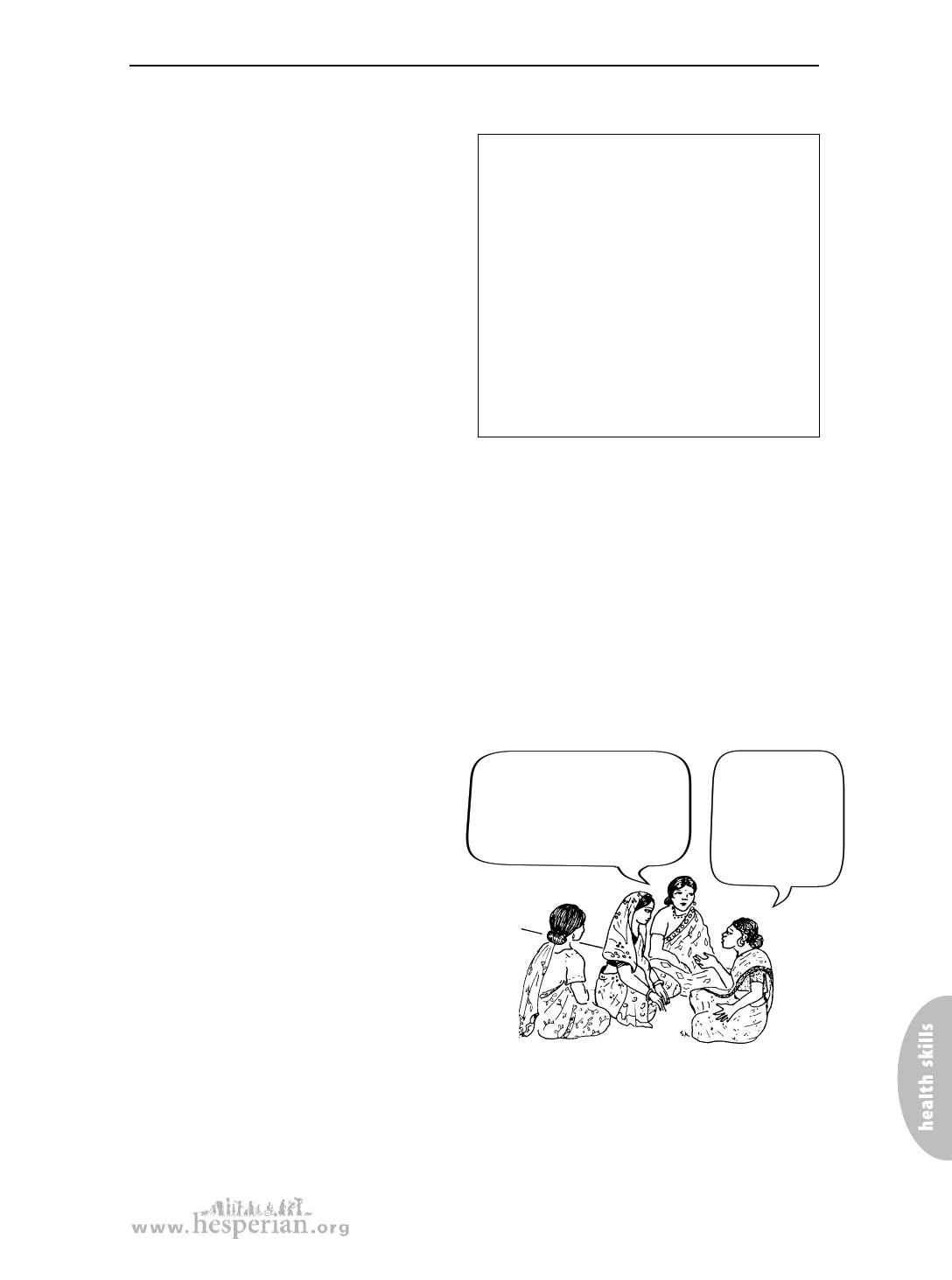
How to help stop STIs in your community
Midwives can teach a woman these ways to protect herself:
• Use a condom every time
she has sex.
• Do not have sex with someone
who has signs of an STI
(although many STIs spread even
when the person has no signs).
• Do not douche or use herbs or
powders to dry the vagina. When
the vagina is dry or irritated by
douches, sex can cause tiny cuts
in the skin, making the woman
more likely to be infected by HIV
or other STIs.
If a man will not use a condom, these
methods may give a woman a little
protection from getting an STI:
• Use a diaphragm.
• Wash the outside of the
genitals after sex.
• Urinate right after sex.
A woman and her partner can also
have oral sex or other sexual touch
instead of intercourse (see page 312).
How to help stop STIs in your community
Here are some ideas to help prevent the spread of STIs in your community:
• Talk to the women you care for about STIs. Some women may feel
embarrassed to talk about them, but knowing more may save their lives.
• During prenatal checkups, ask women about unusual discharge or sores
on the genitals, or offer to examine them for signs of STIs.
• Organize a group to talk about health topics, including STIs and HIV.
• Support education about sex in your local school. Help parents understand
that teaching about STIs,
including HIV, helps young
people make safer choices later
on when they start having sex.
I want my daughters to
be safe — but I don’t
know what to say. My
mother never talked to
I know what
you mean.
Can we think
of ways to
• Talk to men and help them
understand the risks of STIs,
me about this.
explain this
to them?
including the risks to pregnant
women and their babies.
• Find out from your local medical
center, hospital, or Ministry of Health
what STIs are the most common in
your community.
• Find out what medicines to treat STIs
work best in your area — and find outwhat they cost.
Learn how to treat STIs, or help women find treatment.
• Start a community pharmacy so that it will be easier for people to get
medicines and condoms.
337
A Book for Midwives (2010)